Artificial Intelligence (AI) is the cornerstone of the 2020s, reshaping industries, economies, and societies worldwide. In India, the world’s most populous nation with a rapidly digitizing economy, this transformation is profound and pivotal, driving economic growth, reimagining education, and fostering innovation.
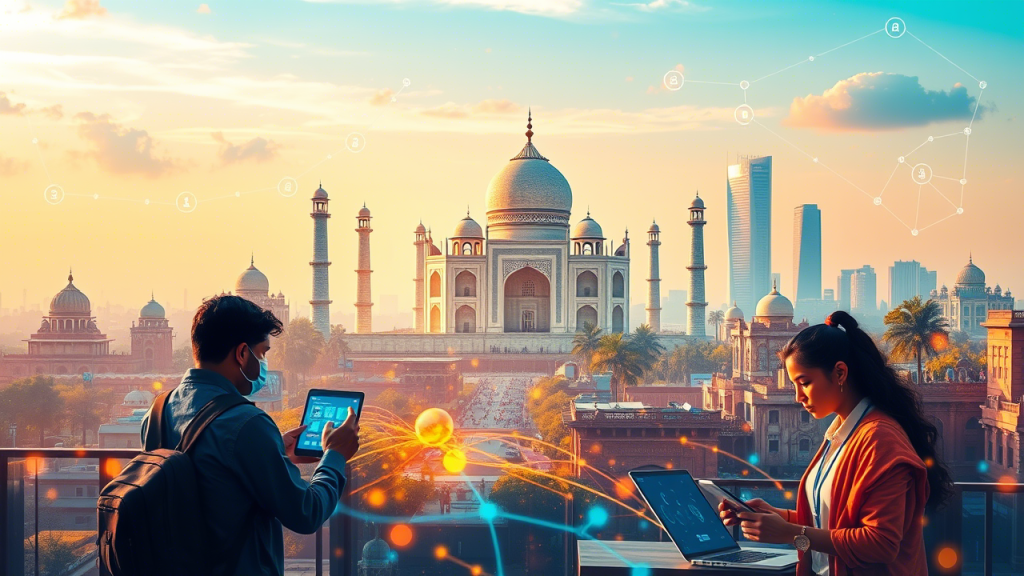
Bangladesh, India’s neighbor and an emerging economic player, is also embracing AI with optimism, leveraging its youthful population and the interim government’s forward-looking vision for a “Smart Bangladesh” by 2041. This article explores India’s AI revolution, draws positive comparisons with Bangladesh’s current AI efforts, and highlights shared prospects for a tech-driven future.
The Talent Boom: Fueling India’s AI Ambitions
India is experiencing an unprecedented surge in demand for AI professionals, driven by its vision to become a $23–35 trillion economy by 2047. The National Association of Software and Service Companies (NASSCOM) projects a need for one million skilled AI workers by 2026. The government’s roadmap, “India’s AI Revolution: A Roadmap to Viksit Bharat,” positions AI, automation, and innovation as pillars of progress. For the 2024–25 academic year, approved B.Tech seats have reached 1.5 million, a 16% increase over four years, with a 50% surge in fields like AI/Machine Learning (ML), Data Science, Cybersecurity, Cloud Computing, and Blockchain.
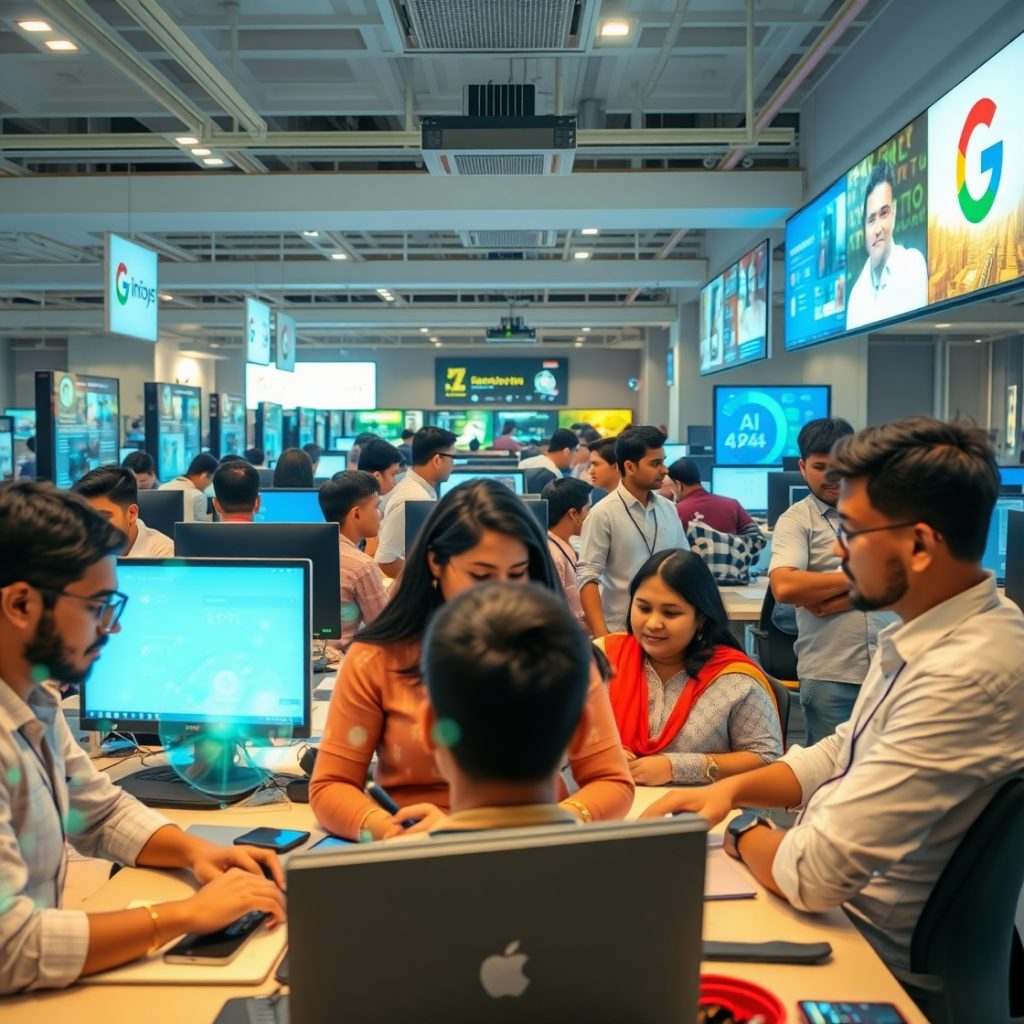
Companies like Tata Consultancy Services, Infosys, and global giants such as Microsoft and Google are recruiting aggressively in hubs like Bengaluru, Hyderabad, and Pune. India’s AI industry is projected to reach $28.8 billion by 2025, growing at a 45% compound annual growth rate (CAGR), with a 14-fold increase in AI-skilled professionals from 2016 to 2023, ranking India among the top five global AI talent hubs.
Education Evolving: From STEM to STEAM in India
India’s education system is transforming to meet AI-driven demands, shifting from STEM (Science, Technology, Engineering, Mathematics) to STEAM, incorporating the Arts for creativity and interdisciplinary skills. Future AI professionals require expertise in coding, algorithm development, communication, psychology, and business. Institutions like the Indian Institutes of Technology (IITs), Indian Institute of Science (IISc), and SRM Institute of Science and Technology offer cross-disciplinary programs in AI-ML Embedded Systems, Data Science, Medical Engineering, and Biotechnology.

IIT-Bombay collaborates with NVIDIA for GPU-accelerated computing training, while IISc partners with Microsoft Research on generative AI. The National Education Policy (NEP) 2020 promotes flexible curricula, introducing coding in schools from Class 6 and offering AI courses via platforms like SWAYAM. With 65% of India’s population under 35, this demographic dividend is being harnessed to build a future-ready workforce.
Data and Research: Building India’s Sovereign AI Ecosystem
A robust AI ecosystem demands high-quality data and research. India’s “BharatNLP” initiative, led by IIT-Bombay and supported by the Ministry of Electronics and Information Technology (MeitY), creates datasets for India’s 22 official languages, covering translation, mathematical reasoning, and culturally grounded question-answering. The “IndicGenAI” project develops Large Language Models (LLMs) for applications like AI tutors for rural students and healthcare diagnostics for diseases like tuberculosis.
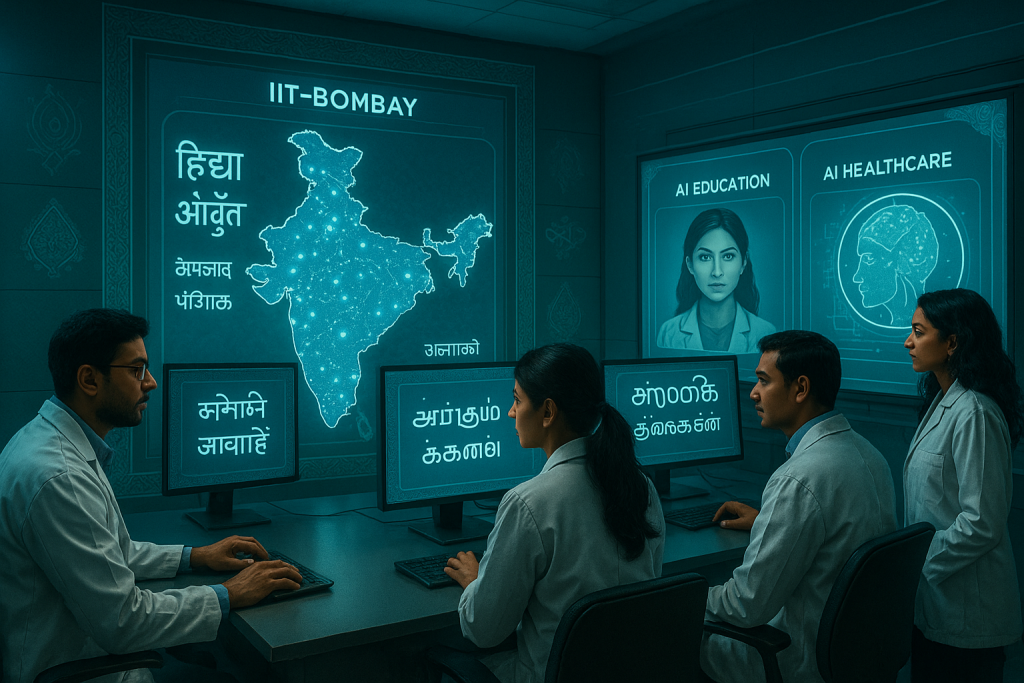
India’s AI Mission, with a $1.2 billion budget, supports compute infrastructure and research, enabling startups, academia, and enterprises. Open-source datasets foster collaboration, while IIT-Madras’s Center for Computational Brain Research explores AI for neuroscience, and IISc advances generative AI for creative industries. With over 20,000 AI-related patents filed in five years, India is a global research leader.
Global AI Race: India’s Strategic Position
Silicon Valley dominates the global AI landscape, with companies like OpenAI (valued at $300 billion after a $40 billion raise) leading the charge. India, however, is carving a niche with cost-effective innovation and a vast talent pool. The Bhashini platform enables real-time translation in Indian languages, and iGOT Karmayogi trains government officials, showcasing India’s open-source, public-sector-led approach.

As a founding member of the Global Partnership on Artificial Intelligence (GPAI), India’s 2024 presidency prioritized democratizing AI skills and applying AI in agriculture and education for Sustainable Development Goals (SDGs) by 2030. AI adoption in India is rapid, with 30% of enterprises optimizing value through AI, surpassing the global average of 26% (Boston Consulting Group). The cost of AI inference has dropped 99% in two years, enabling startups and SMEs. Hardware advancements, like Nvidia’s energy-efficient GPUs and Google’s AI chips, bolster India’s infrastructure.
Competitive Edge: Seeking India’s AI Moat
The economics of generative AI are uncertain, with massive investments raising profitability questions. Indian companies seek “moats” through localized AI models, like Sarvam AI’s Hindi LLMs and Qure.ai’s radiology diagnostics.
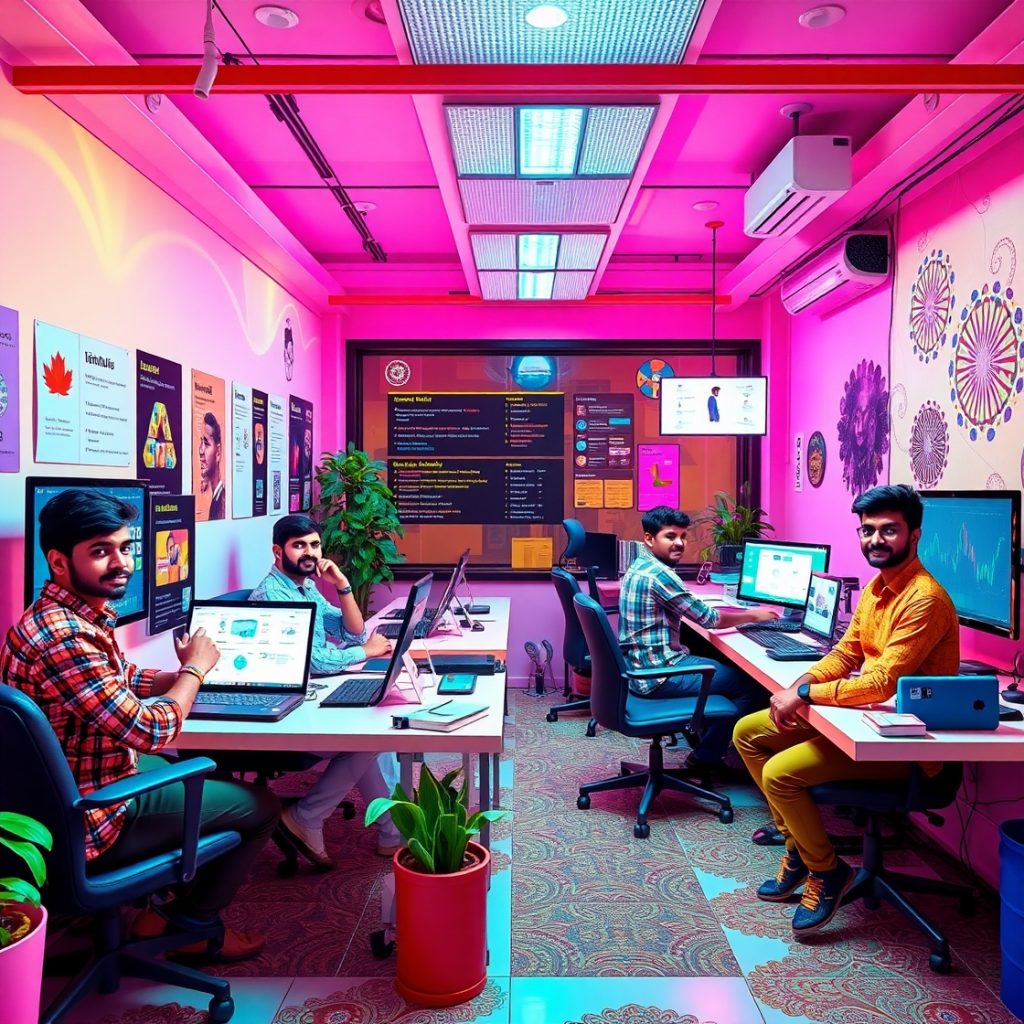
Over 1,200 AI startups, including Haptik and Krutrim, drive innovation, while Bengaluru’s AI research hubs for Google and Intel enhance global competitiveness. Competing with giants requires continuous innovation, talent investment, and infrastructure growth, positioning India to sustain its edge in niche, high-impact AI applications.
AI Transforming Society: India’s Inclusive Impact
AI is reshaping Indian society. In education, platforms like Byju’s personalize learning, and AI tutors in regional languages reach rural schools. In healthcare, AI improves diagnostics in underserved areas, addressing diseases like diabetes. In governance, AI enhances Aadhaar’s biometric authentication and smart city traffic systems.

India’s draft AI ethics framework ensures privacy, fairness, and accountability, mandating transparency in AI decision-making. Balancing innovation with ethical governance is key to inclusive benefits, empowering millions across diverse sectors.
Bangladesh’s AI Ascent: A Complementary Vision
Bangladesh is embracing AI with optimism under its interim government, formed in August 2024, which drives the “Smart Bangladesh” vision by 2041. The National AI Policy 2024 targets ten sectors, including healthcare, agriculture, manufacturing, and finance, aiming to boost GDP growth by 2.5% annually. The “AI-based Innovation Challenge-2025” fosters startups, with companies like Intelligent Machines Limited reporting a 76% productivity boost for clients like bKash in financial inclusion. In the ready-made garment sector (80% of export revenue), AI optimizes supply chains, inspired by global brands like Zara.

In healthcare, AIeh-MD predicts diseases via microbiome analysis, and Praava Health’s AI telemedicine expands rural access. Agriculture benefits from AI-driven crop monitoring, improving yields. The government plans to train 100,000 youth in AI by 2030, supported by the Bangladesh Computer Council. The National AI Center of Excellence ensures ethical AI, addressing privacy and cybersecurity.
Shared Prospects: India and Bangladesh in Synergy
India’s $28.8 billion AI market dwarfs Bangladesh’s projected $5 billion IT industry by 2025, but both nations share a vision for inclusive growth. Bangladesh’s lower labor costs (30% less than India’s for IT services) position it as an AI outsourcing hub, complementing India’s global leadership.

Bangladesh’s focus on localized solutions, like Bangla LLMs, mirrors India’s IndicGenAI efforts, offering collaboration potential. For instance, joint research on Bangla and Hindi LLMs could enhance regional AI capabilities. Both countries leverage youthful populations (65% under 35) and education reforms, with India’s STEAM model inspiring Bangladesh’s AI curricula at universities like BRAC. India’s infrastructure and research ecosystem provide a blueprint, while Bangladesh’s agility and affordability amplify regional innovation. By 2030, this synergy could create millions of AI-driven jobs, fostering prosperity across South Asia.
The Road Ahead: A Bright Future for Both Nations
India’s AI revolution, with a million professionals by 2026, a transformed education system, and a thriving industry, positions it for global leadership. Bangladesh’s nascent but dynamic AI ecosystem, driven by proactive policies and cost advantages, complements India’s efforts. Both nations prioritize ethical AI and inclusive growth, addressing societal needs in education, healthcare, and governance.
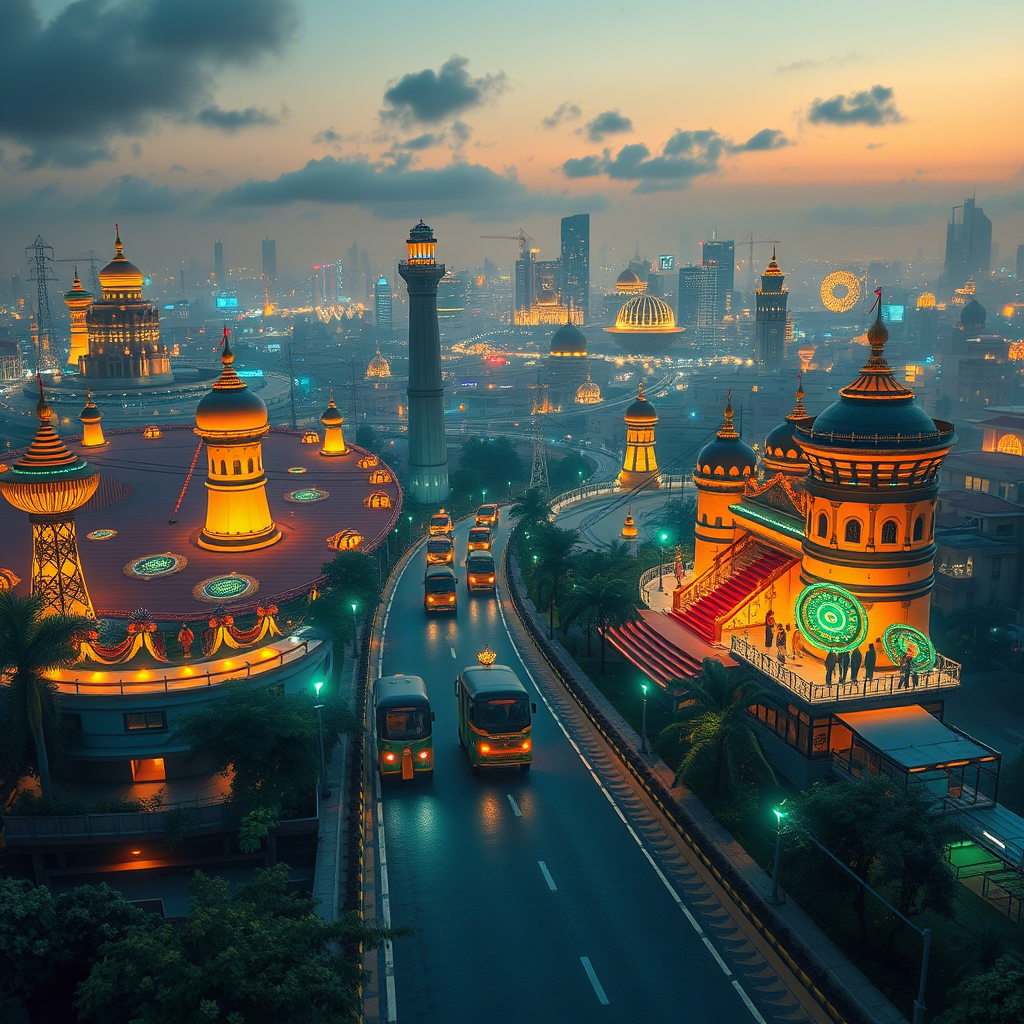
Success hinges on technical excellence, creativity, and human-centric solutions. Collaborative opportunities, such as shared research and talent development, could amplify their impact, paving the way for a smarter, more inclusive, and prosperous South Asia.
Copyrights : Dhaka.ai



